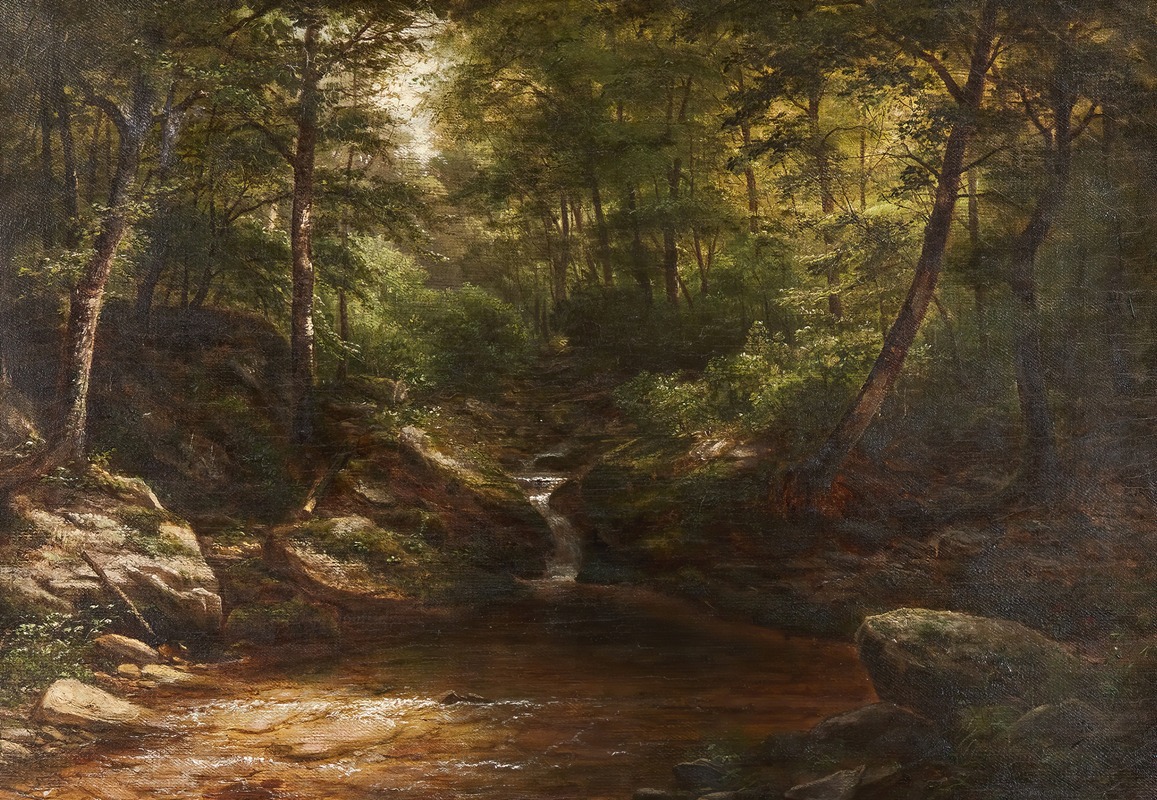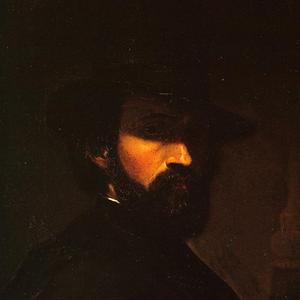

George Hetzel was a French-born American artist. He is regarded as the founder of the Scalp Level School of painting, a contemporary to the French Barbizon School of Naturalist painting. He is associated with the Düsseldorf school of painting.
Born in an ethnically mixed part of Alsace, France, on January 17, 1826; Hetzel's family spoke primarily German and emigrated to the United States when he was aged two. They traveled from a Baltimore port to a neighborhood in Allegheny City (Deutschtown), in Pittsburgh, Pennsylvania. Hetzel attended Allegheny City school and was apprenticed to a local sign- and house-painter. After four years' training, he earned an artisan's apprenticeship, painting the interior murals of riverboat public rooms and local Pittsburgh saloons. George Hetzel's daughter Lila Hetzel also studied art in Pittsburgh, Pennsylvania at the Pittsburgh School of Design.
George was sent to the Kunstakademie Düsseldorf between 1847–49 and studied Da Vinci's Chiaroscuro (the use of light and dark shadows to heighten depth and drama), which became a signature stroke in his later works.
It is thought that Hetzel was first introduced to the bucolic setting of Scalp Level (at the intersection of Paint Creek and Little Paint Creek outside of Johnstown, Pennsylvania) around 1866 during a fishing trip. He was then an instructor at the Pittsburgh School of Design for Women and encouraged his colleagues and students to make Scalp Level their summer retreat and work "en plein air".
Hetzel exhibited at the National Academy in New York City between 1865-1882 and at the Pennsylvania Academy until 1891. He was included in the 1876 Centennial Exposition in Philadelphia and shown in the first Carnegie International in 1896. He also exhibited at the World's Columbian Exposition, 1892-1893. The J. J. Gillespie Gallery sold his works and he kept an independent studio. His career was established before the Scalp Level works, but they are currently foremost in his legacy.
More Artworks by George Hetzel

